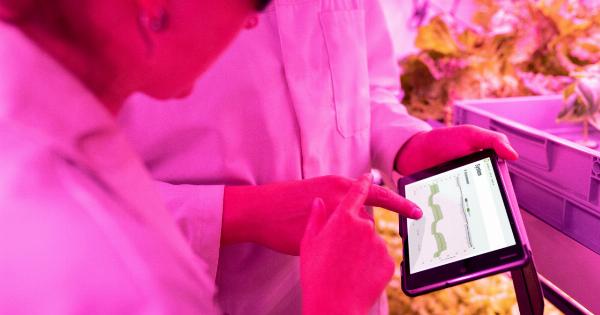Tracking imports and hospitalizations has become an important aspect of public health management. Traditional methods of data collection such as surveys and hospital reports can be time-consuming and not always reliable.
However, modern technology has made it possible to monitor sewage for the presence of pathogens that can cause diseases. The use of sewage monitoring as a tool for disease surveillance has gained popularity in recent years, and has proven to be an effective way of tracking the spread of infections.
The Science Behind Sewage Monitoring
Wastewater contains a variety of microorganisms and chemicals that are excreted by humans and animals. By analyzing the sewage, scientists can detect the presence of specific pathogens and chemicals that are known to cause certain diseases.
This technique is known as wastewater-based epidemiology (WBE).
WBE has been used to track the spread of viruses such as enterovirus D68 and poliovirus, as well as bacterial infections such as hepatitis A, Legionnaire’s disease, and norovirus.
By monitoring sewage, scientists can detect the presence of these pathogens before they cause widespread outbreaks. In addition, WBE can also be used to detect the presence of drugs and chemicals in the water supply, which can pose a threat to public health.
The Benefits of Sewage Monitoring
There are several benefits to using sewage monitoring as a tool for disease surveillance:.
- Early detection: By monitoring sewage, scientists can detect the presence of pathogens before they cause widespread outbreaks. This allows public health officials to take preventive measures before the disease spreads.
- Cost-effective: Collecting and analyzing sewage samples is relatively inexpensive compared to other methods of disease surveillance.
- Non-invasive: Sewage monitoring is a non-invasive method of disease surveillance that does not require individuals to undergo medical procedures. This makes it more acceptable to the public.
- Accurate: Sewage monitoring provides an accurate picture of the prevalence of a disease in a community. Unlike surveys and hospital reports, which rely on self-reported data, sewage monitoring provides objective data.
Using Sewage Monitoring to Track Imports
Sewage monitoring can be used to track the prevalence of infectious diseases in a community, as well as to detect the presence of drugs and chemicals in the water supply.
However, sewage monitoring can also be used to track imports of infectious diseases from other countries.
When an individual is infected with a pathogen, the virus or bacteria can enter the sewage system through urine or feces.
By monitoring sewage for the presence of these pathogens, scientists can detect the importation of infectious diseases into a community.
For example, in 2014, scientists in Israel used sewage monitoring to detect the presence of poliovirus in the sewage system.
Although there were no reported cases of polio in the country, the sewage monitoring revealed that the virus had been imported into Israel. This allowed public health officials to take preventive measures to stop the spread of the virus.
Using Sewage Monitoring to Track Hospitalizations
In addition to tracking imports of infectious diseases, sewage monitoring can also be used to track hospitalizations. When an individual is hospitalized, the pathogens that caused their illness can enter the sewage system through urine or feces.
By monitoring sewage for the presence of these pathogens, scientists can detect the prevalence of specific diseases in a community.
This can be useful for public health officials, who can use this information to develop targeted prevention and treatment strategies.
For example, in 2020, scientists in the Netherlands used sewage monitoring to detect the presence of the coronavirus in the country.
By analyzing sewage samples from different communities, the scientists were able to track the spread of the virus and detect outbreaks before they became widespread.
Conclusion
Sewage monitoring is a valuable tool for disease surveillance. It allows public health officials to detect the presence of infectious diseases before they cause widespread outbreaks.
In addition, sewage monitoring can be used to track the importation of infectious diseases from other countries, as well as to track hospitalizations.
Although sewage monitoring is not a perfect tool, it has proven to be an effective way of tracking disease spread. As technology continues to advance, sewage monitoring will become an even more important tool for disease surveillance.































